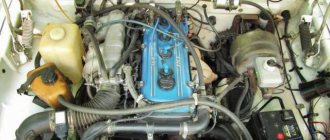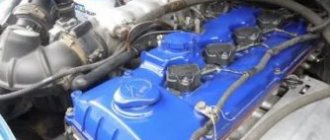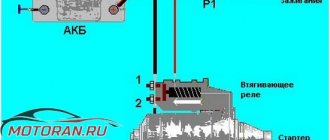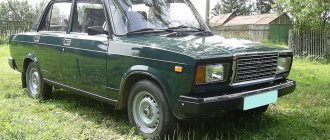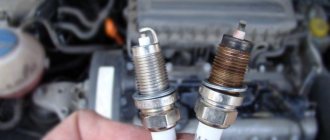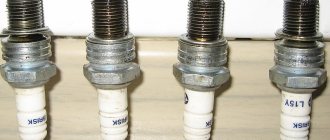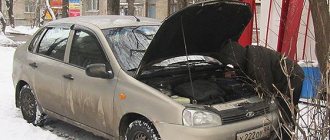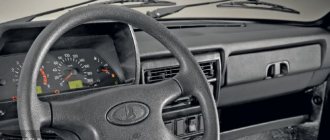The car starts and immediately stalls: causes, solutions
> Engine
Even a car that is well and regularly maintained may not work correctly. Usually this is due to worn-out systems, low-quality technical fluids, etc. But there are other problems due to which the car starts well and immediately stalls.
Main reasons
The car may stall after starting the engine for several reasons, both when it is cold when first starting, or when it is hot. The problem manifests itself on injection and diesel units, for which there are quite a few reasons: from lack of fuel to more complex malfunctions associated with the fuel line or even the engine.
It is necessary to identify as early as possible the reason that the engine starts and immediately stalls. Otherwise, the car will not be able to be used.
Attention! An unexplained plug may indicate more complex failures. They need to be eliminated quickly so that repairs do not become more complex and costly.
When cold the engine starts and immediately stalls.
There are several simple reasons why a car may stall immediately after the engine starts:
- Running out of fuel is a simple reason, but because of this it is often overlooked. During long breaks in operation, fuel condensate may drain from the walls of the tank, with which the car can start. There is not enough gasoline for further operation, which is why the car stalls.
- Bad diesel or gasoline - if the fuel was purchased at dubious gas stations, the composition contains additives, even water. They have a bad effect on the fuel system and its filters. Additional information! In diesel engines, paraffin added to the diesel composition can harden. Its particles clog the filter that cleans the fuel, causing the pressure on the fuel line to drop.
- Car alarms - advanced security systems can not only trigger when installed in a car, block the steering wheel locks, but also prevent the engine from running. If such a system is installed, you should check its deactivation.
- No vacuum - This problem occurs in carburetor cars if there is air in any part of the fuel supply. This could be the carburetor itself, the intake manifold, or the vacuum hose. The mixture of fuel and air has completely different proportions, which is why the engine cannot operate normally.
- Low idle speed is a common problem in carburetor cars, because in injection cars the speed is adjusted automatically. You will need to manually adjust the idle speed with the carburetor. It can correct the situation, since the engine will consume a normal amount of gasoline.
These are the main reasons why there are problems with starting cars, including carburetor-type ones. But there are still injection machines that require consideration.
The engine starts and the injector immediately stalls
An injector is a part that injects fuel into the engine and is sensitive to voltage changes. There are a number of reasons why an injector stalls:
- problems with the fuel system: the fuel pump is checked. This is easy to do; you need to turn on the ignition; if you hear a buzzing sound, the pump is working. If there are no sounds, you need to check whether voltage is supplied to it;
- dirty throttle: if the idle air control is contaminated with carbon deposits, air passes through it less easily, which means the engine operates in abnormal mode. A breakdown of the throttle valve also plays a role: if it is closed, no air enters the engine;
- Ignition system problem: If the fuel system and air supply are operating as normal, check for sparking. The spark plugs are being studied, they should be unscrewed, cleaned, and checked for a spark. The easiest way is to attach an armored wire to the spark plug and crank the crankshaft with the starter. Damaged wires may be to blame for the situation; they can be checked with a tester and a megger. If they are not there, you should start the engine in the dark. If part of the system is damaged, high-voltage discharges can be seen on the coils, conductors and tips;
- breakdowns of sensors and ECUs: electronic engine management systems control all motor power elements using information coming from the sensors. If any of them are damaged, the power unit may not only stall, but also refuse to start. If there are problems with the ECU, you can find out about them by the “Check Engine” indicator on the dashboard. To find a fault, read errors using a scanner;
- “out of sync” of the valves: the valve timing in the car could be out of sync, for example, due to the timing belt stretching or being misaligned. Aligning the shafts to the marks or replacing the belt with a new one will help.
The carburetor or injector does not start on a cold gazelle 406 engine
A Gazelle with a 406 carburetor and injection engine does not want to work for various reasons. Most of the issues are related to cold temperatures in winter.
↑
Common reasons why a gazelle won't start
The Gazelle will not start, there are different reasons:
- The fuel system and its associated components are faulty. The crux of the problem relates to the cylinders and valves.
- The ignition system has suspected problems.
- Poor starter and battery performance.
- The uniform air supply is interrupted.
- There are malfunctions in the control unit and its sensors.
All elements of the fuel system will have a significant impact on engine starting. The ZMZ 406 engine for the gazelle is available in injection and carburetor versions. In the injection version, injectors are installed, obviously they can be the suspected source of the problem. There was no cleaning for a long period of time. They are in a dirty state. They should be cleaned or replaced.
Also the fuel pump is faulty due to internal failure. First, check if the pump is pumping. First of all, turn the ignition key to position 2. A noise is heard behind, indicating a working pump.
↑
Fuel supply problems
The 406 engine carburetor does not start because the fuel supply is difficult. The reason is that there is no ignition in the cylinders of the unit. There is a small amount of fuel for starting; the spark plugs are filled with excess fuel.
Control begins with observing how the exhaust occurs. During the rotation of the starter, light smoke appears from the pipe, indicating the flow of fuel into the cylinders.
↑
Carburetor problems
The 406 carburetor engine does not start. Adjust the semi-automatic starting device on the carburetor in order to ensure the desired opening angle of the dampers at the time of starting. If not adjusted, a lot of fuel appears in the intake manifold, as well as excess cold air in the carburetor. In the first case, the carburetor is removed, access from the rear is small. The engine can be adjusted.
↑
Checking and setting up the starting device
Be sure to check the trigger diaphragm. If it is pulled out or torn, there will be no positive result even if the valves and levers of this device are adjusted correctly. Carburetor specialists are not eager to delve into the intricacies, there is too much work and patience.
↑
Poor quality fuel
There are problems with low-quality fuel. Change gasoline at a reputable gas station. All gasoline is pumped out of the tank and new gas is added.
Sometimes the valve that shuts off the gasoline changes. Make sure that gasoline is flowing into the carburetor.
↑
Fine filter malfunction
Gazelle ZMS 406 carburetor does not start. Fine and coarse filters prevent the movement of gasoline into the engine. When clogged, they do not allow fuel to pass through, leaving the cylinders with a lean mixture. Fuel does not ignite.
↑
Problems with the fuel pump
It often happens that the engine does not start because fuel does not flow into the engine due to the low efficiency of the fuel pump. The fuel pump does not have the required level of pressure in the rail. There may be an air leak in the fuel system. Inspect main damage and cracks. Gasoline is leaking - loss of tightness of the fuel wires.
↑
Valves problem
The valves are not pressed tightly against the seats. Gasoline enters the cylinders. There is an overflow of fuel, the spark plugs are flooded, there is no spark. Check the carburetor, most likely there is ice in the float chamber. The dosing needle is frozen.
↑
Ignition does not work as expected
Spark plugs together with wires influence engine starting. Checking the spark plugs on a bench, but you can check it the old fashioned way. They are unscrewed after starting the unit. The spark plug is filled with gasoline - an indication of leakage in the injectors or ignition issues. The spark plugs and also the wires are checked for suitability, making sure that there is a spark discharge. A dry spark plug indicates that there is no fuel supply to the cylinder body. We bring the spark plug body to ground and start the engine. If the spark plug is working, there will be a spark. If it is faulty, there will be no spark. Change the tips of the candles, which sometimes break through, especially on the first pot.
↑
Error codes
When the electrical circuit of the car has become clear, you can consider the errors of the electronic engine control unit, which will help to accurately recognize the malfunction, as well as eliminate them in a timely manner.
Designation of fault codes
- 1 P0016 Temporary inconsistency (phase shift) of the camshaft and crankshaft
- 2 P0031 Short circuit of the oxygen sensor heater circuit
- 3 P0032 Open circuit of the oxygen sensor heater
- 4 P0068 Throttle position sensor error (mismatch with absolute pressure sensor)
- 5 P2074 Absolute pressure sensor error (mismatch with throttle position sensor)
- 6 P0071 Ambient temperature sensor error (mismatch with other sensors)
- 7 P0072 Short circuit of the ambient temperature sensor circuit
- 8 P0073 Open circuit of the ambient temperature sensor
- 9 P0107 Short circuit of the pressure sensor circuit
- 10 P0108 Pressure sensor circuit open
- 11 P0111 Intake air temperature sensor error
- 12 P0112 Short circuit of the intake air temperature sensor circuit
- 13 P0113 Open air temperature sensor circuit
- 14 P0116 The performance characteristics of the coolant temperature sensor are not normal
- 15 P0117 Short circuit of the coolant temperature sensor circuit
- 16 P0118 Open circuit of the coolant temperature sensor
- 17 P0122 Short circuit of the throttle position sensor circuit
- 18 P0123 Open circuit of the throttle position sensor
- 19 P0125 Insufficient cooling temperature for fuel control feedback
- 20 P0128 Thermostat malfunction
- 21 P0129 Incorrect reading of the absolute pressure sensor when the ignition is turned off
- 22 P0131 Short circuit of the oxygen sensor circuit
- 23 P0132 Open circuit of the oxygen sensor
- 24 P0133 Slow response of the oxygen sensor to changes in the composition of the mixture
- 25 P0135 Oxygen sensor heater performance is not normal
- 26 U0155 No messages on the data bus
- 27 P0171 Poor fuel mixture (no feedback from the oxygen sensor)
- 28 P0172 Rich fuel mixture (no feedback from oxygen sensor)
- 29 P0201 Open circuit of injector No. 1
- 30 P0202 Open circuit of injector No. 2
- 31 P0203 Open circuit of injector No. 3
- 32 P0204 Open circuit of injector No. 4
- 33 P0300 Missing working process on all cylinders
- 34 P0301 Missing stroke of cylinder No. 1
- 35 P0302 Missing stroke of cylinder No. 2
- 36 P0303 Missing stroke of cylinder No. 3
- 37 P0304 Missing stroke of cylinder No. 4
- 38 P0315 Incorrect signal from the crankshaft sensor
- 39 P0325 Knock sensor circuit
- 40 P0335 Open circuit of the crankshaft position sensor
- 41 P0339 Missing signal pulses from the crankshaft position sensor
- 42 P0340 Open circuit of the camshaft position sensor
- 43 P0344 Missing signal pulses from the camshaft and crankshaft position sensor
- 44 P0443 Open circuit of the canister purge valve
- 45 P0480 Fan control relay circuit open
- 46 P0501 Performance characteristics of the vehicle speed sensor signal are normal
- 47 P0506 Idle speed higher than specified
- 48 P0507 Idle speed below specified
- 49 P0508 Open circuit of the idle speed regulator
- 50 P0509 Short circuit of the idle regulator circuit
- 51 P0516 Open circuit of the battery temperature sensor
- 52 P0517 Low signal level of battery temperature sensor
- 53 P0532 Low signal level of the air conditioner pressure sensor
- 54 P0533 Open air conditioner pressure sensor circuit
- 55 P0562 Low battery voltage
- 56 P0563 Battery voltage high
- 57 P0600 Malfunctions of the internal circuits of the control unit
- 58 P0601 Internal memory checksum error
- 59 P0622 Malfunction of the generator excitation winding circuit
- 60 P0627 Open circuit of the fuel pump relay
- 61 P0630 VIN is not programmed into the control unit
- 62 P0632 Odometer is not programmed in the control unit
- 63 P0645 Open circuit of the compressor clutch relay
- 64 P0685 Main relay circuit open
- 65 P0688 Open circuit of main relay contacts
- 66 P1115 Temperature sensor mismatch
- 67 P1603 Internal error CU transmission of dual-port RAM
- 68 P1604 Internal error CU writing / reading dual-port RAM
- 69 P1607 Counts incorrectly in “-”
- 70 P2610 Counts incorrectly in “+”
- 71 P1696 Error in the control unit prohibiting writing to the EEPROM
- 72 P1697 Error control unit incomplete programming
- 73 P2096 Low fuel mixture signal
- 74 P2097 Rich fuel mixture signal
- 75 P2302 Insufficient ionization of the secondary circuit of ignition coil No. 1
- 76 P2305 Insufficient ionization of the secondary circuit of ignition coil No. 2
- 77 P2503 Low output level of the charging system
Battery problems
If the Gazelle does not start, then you should start searching for the impossibility of starting the engine with the battery. If it is insufficiently charged, the starter does not have enough energy to turn the crankshaft. In this case, a significant drop in the on-board network voltage occurs. The traction relay starts to click, but the engine cannot start.
Read more: Find out where a car goes by its license plate number
The situation with starting the engine with a discharged or old battery is aggravated in cold weather. There are two reasons for this:
- engine oil thickens in the cold and it becomes more difficult for the starter to crank the crankshaft, which causes increased starting current and greater battery energy consumption;
- When it's cold, the chemical reactions of the battery slow down and the battery becomes able to deliver less charge.
In winter, both of the above reasons overlap each other. Starting becomes especially difficult when cold. Under unfavorable conditions, the car may completely refuse to start.
With a discharged battery, many car owners start their Gazelle only with a pusher, but there are other ways, the main ones being:
- start using ROM;
- “lighting up” from another vehicle;
- charging the original battery with a nominal or increased current and then starting the power unit.
A situation with a discharged battery does not require special attention from the car owner if it occurs only once. It is enough to recharge the battery and you can continue to operate the machine as before. If the battery dies often, then it is necessary to diagnose it. Based on its results, a decision is made on the method and feasibility of restoration work. In some cases, it is more rational to purchase a new battery.
If the battery shows full serviceability, but dies in a short period of time, then the on-board network must be checked. It may contain short circuits and high leakage currents. If they are identified, you should not delay troubleshooting. Prompt resolution of problems will eliminate the risk of a car fire.
The presence of through cracks and other similar defects leads to the loss of part of the electrolyte. The battery's ability to deliver starting current and energy is significantly reduced. To diagnose the problem, just carefully inspect the case. If any damage is detected, the car owner is faced with a choice between carrying out repairs or purchasing a new power source.
Adjustment
Fuel consumption directly depends on the adjustment, even if the carburetor is absolutely working.
There is only one external adjustment in the device - idle speed. How to do it correctly:
- We start the engine and warm it up to a hot state, then perform adjustments at idle speed;
- We unscrew the quantity screw (a large screw with a spring) and the quality screw until the engine reaches maximum speed;
- By evenly tightening both screws, we find the position when the engine starts to work with minimal interruptions;
- Using the quantity screw we set the speed to a slightly higher speed, at this point using the quality screw we achieve stable operation of the motor, but at the same time we need to try to keep the quality screw unscrewed to a minimum (as far as possible);
- Having adjusted the quality, turn the quantity screw until the optimal idle speed is obtained (700-750 rpm).
If there are malfunctions in the carburetor or engine that affect the stability of idle speed, there is no point in adjusting the idle speed - you must first fix the problem.
If you remove the carburetor housing cover, you can adjust the gasoline level in the float chamber. Adjustment is made by bending the tongue on the float.
Carburetor malfunctions
What to do if the carburetor Gazelle begins to consume fuel significantly more than normal?
This is what a Solex 21073 carburetor looks like for a Gazelle
The following malfunctions occurred:
Clogged jets
Moreover (you should pay attention), it was not the fuel jets of the main metering system that became clogged in the first place, as everyone usually assumed, but the idle channels under the adjusting screws. It’s interesting - the XX becomes clogged, but the engine does not work normally at medium speeds, and at the same time there is a high fuel consumption; The accelerator pump diaphragm breaks or the accelerator nozzle becomes clogged
The accelerator pump stops working. As a result, under hard throttle a dip occurs;
Accelerator pump diaphragm for Solex carburetor
There are still all sorts of problems with the carb, but the above-mentioned “sores” are more common. By the way, any malfunction of the carburetor invariably leads to an increase in fuel consumption, which is why this device causes a lot of headaches for Gazelle car owners.
Common Causes
The Gazelle 405 injector does not start for various reasons. There could be a hundred of them, or even more, since there are simply unrealistically many details. However, injectors and spark plugs
. If the latter can be bought at any auto parts store, and even a less experienced driver can replace them, then problems may arise with the former.
The fact is that it is very difficult to determine that in such a situation in the Gazelle 405 it was the injectors that broke
They are often the last thing thought of.
, so a lot of time is lost diagnosing the breakdown. But there is another option - problems with the injector. Fortunately, it doesn’t always need to be repaired; sometimes all you need to do is wash the part and the car will start. In any case, you will be very lucky if the breakdown is not serious, since the Gazelle 405 can take forever to repair and still not understand the reasons for the breakdown.
{banner_content}
Other reasons why the engine stalls when hot
In addition to the above material, I would like to note a number of malfunctions that lead to a sudden stop of a hot engine while driving. The unit may stall while driving if the timing belt or chain is broken. This situation means that in most cases the power unit will require expensive repairs, since as a result of a break the valves are bent, piston defects and other damage to engine elements occur.
If the engine stalls while driving through deep puddles or other water obstacles, then there is a high probability of water getting into the cylinders or the elements of the ignition system getting wet. In the first case, water enters the combustion chambers through the air intake. Since water is incompressible, the engine is severely damaged, connecting rods bend, cracks appear in the cylinder block, etc. After a water hammer, there is usually a need to overhaul the engine. In the second case, the problem is not critical, since after removing the moisture, the functionality of the ignition system and power unit can often be restored.
Also, a car may stall when hot if there is too little fuel in the fuel tank. Quite often the engine stops when driving uphill. The fact is that during a long climb, the car is in a position for a long time when the fuel tank is tilted and the fuel level is not enough to supply through the fuel intake. It is quite obvious that in this case the engine will stall.
Search
Why does the Gazelle 405 injection not start? Main reasons
Unfortunately, the difficulties with cars are different, do not start the injector Gazelle 405
for some reason most of the time. Drivers start scratching their heads, but from time to time it is impossible to find a solution to the problem.
At the moment, several more possible breakdowns will be considered in time, what kind of car don’t let go
When this happens, the first thing our client notices is. these are wires, spark plugs, pressure ramps and nozzles
In most cases, the Gazelle 405 injector does not start specifically through the spark plugs, so just change them. Unfortunately, the tasks seem more serious than candles.
Some, when the Gazelle 405 does not start, immediately change the temperature sensor to cool the water. The fact is that the engine may overheat precisely because of this, you do not want to start.
Try replacing the sensor and the cooling will return to normal. In any case, the safest option. take it to a car service center. There, real professionals will quickly deal with breakdowns and say that there weren’t that many cars. You will know in the future what exactly will be repaired.
Common reasons
Do not start the Gazelle 405 injector for any reason. There are hundreds you'll love, and it's not easy to save since there are endless parts. However, in most cases they break nozzles and spark plugs
. If the latter can be bought at any auto parts store, and even an inexperienced driver can replace them, then the former may have problems.
Problems with WMD 405 Euro 3
We are looking for the cause of the malfunction of the ZMZ 405 euro 3
We clean the throttle body while eliminating minor problems.
Grow up Gazelle. Troubleshooting (ZMZ 405 E3) by troubleshooting.
I'm looking for some, it starts
great, this will take seconds3
-5 at 2500-3000 rpm and
the booths
are hot. Now let's get started!
The fact is that in the Gazelle 405 it is very difficult to determine the situation, the snot has broken
Car service to help
If you decide to contact a service center, first perform engine diagnostics. Little experienced drivers understand the cause of the breakdown. At the same time, Gazelle 405 may not start for various reasons, and some of them can be resolved locally.
When you finally take your car to the dealership, at least check with your staff, most likely they will tell you what the problem is.
It is very important to know absolutely everything about your car
to protect yourself on the road and get extra work done. Sooner or later, any part can break, but it will be better if you are prepared for this.
Special cases
In addition to all of the above, there are other adventures with the Gazelle 405. Many drivers do not notice how the chain on the engine jumps. Accordingly, the engine refuses to come to life until the chain is in place.
Your task is simply to open the hood and check if the chain is good
, if not, put it in its place. This procedure will take 10 minutes at best, but you can start the car. The rest do not start the Gazelle 405 injector due to other problems.
It's difficult to answer this question, so we've just listed some of the most common rejection options for you. You can only get an accurate answer after a thorough diagnosis. It is at this stage that you can find out the reason why the car refuses to start. So don’t worry and it’s better to contact a car service.
Source
Post Views: 9
Recommendations
Comments 60
And how did the epic end? I have similar syndromes =(
remove the chip from the mass air flow sensor and start it! If it doesn’t help, then put it back on and take it off. Even if the pump dies, then at xx it will create the necessary pressure, but in power mode it will not work! pull the chips and look!
So, I’ll check with the MAF tomorrow morning, but if I reset the MAF, it generally stalls immediately after starting, but sometimes it lasts for 5-20 seconds, but then it dies immediately. What else to watch? I installed the new phases, for some reason they are shorter than the old one, by 0.2 cm somewhere, +- 0.1. Rxx seems to be working, I checked it as a direct plus, according to the book it was written to check the central socket and the side ones (in turn), it closes, I check the two outer ones, it also closes, although nothing is written about the outer sockets... The mass air flow sensor is also intact, it seems like it gives out 2.80 ohms and not the norm of 2.6 as it should be...what is the reason?
according to IAC - everything depends on the ECU firmware! DPRV - question to the manufacturer DMRV - it is still a sensor and it also has brains!
filter, there’s nothing else, and maybe a fuel filter, but then it won’t work
I changed the filter, the old one was spinning the same way, they blamed it, but it didn’t turn out that way...
Guys, I’m sorry that it’s not much on topic, but I hope that there’s nothing wrong with it, on the contrary, at idle it works for me, when I press the gas pedal, it feels like there’s either not enough fuel, or it’s terribly overflowing, periodically this overflow or The lack of fuel disappears and the car drives quite normally. What could be, where to go? Thanks for understanding. Machine 3102 with ZMZ 406.
I had this happen because of the injectors.
Do you think it's worth cleaning? Or should I change it anyway?
Cleaning didn't help me, I changed it
Thank you. I'll try to clean it tomorrow
I agree with what was said above on my own - after replacing the filters, if that doesn’t help, try to measure the pressure of the fuel line. 1 the pressure of the pump without a fine filter (in front of the ramp) should be at least 4.5 kgcm 2 at idle, the pressure in the rail should be at least 2.5 kgcm3 most likely The check valve on the fuel rail failed, I replaced about a dozen at one time until I found an old model - a dismountable one - all the problems with idle were gone, good luck
really? because if I give it gas, everything is perfect, it doesn’t hold idle even for 5 seconds, it stalls...
It was due to a clogged filter in the tank (pyramid)
if the fuel pump makes a lot of noise, it means it will soon grunt, I had this happen, you can last a month on this, but apparently it needs a replacement
During the operation of a car, a common situation is that after turning the ignition key, the car starts, the engine starts to work and stalls after a few seconds. As a rule, 3-5 seconds pass from the moment of starting to stopping the internal combustion engine. Before the engine stops completely, engine vibrations are also noticeable, the power unit shakes and operates very unstable.
This happens as a result of a decrease in speed, the resonance effect of a rotating crankshaft, etc. When you try to start the engine again, the engine may no longer start, or the situation described above may repeat again.
The reasons for this problem vary. The main thing is that if the car starts and stalls, this indicates that in-depth diagnostics are needed. Next we will talk about what to do in such a situation, as well as how to find the reason why the engine stalls after starting.
Read in this article
Signs of trouble
There are three main symptoms of problems with the injector (injector malfunction) of a Gazelle car.
A characteristic sign of a malfunction can be considered detonation, which is unpleasant for the driver’s hearing.
It destroys the motor, which is why it is so important to find the fault in time and fix it. If the engine stalls for no reason on the road, and subsequent attempts to start it lead to the goal only after many repetitions, this is a clear sign of a faulty injector. The power of the power unit does not inspire approval as before. In common parlance - the car does not “pull”
When climbing a hill, the movement turns into a real test of the driver’s nervous system and can be detrimental to the engine.
Doesn't start when the injector is hot
The car starts and immediately stalls - causes and solution to the problem
High-quality operation of the vehicle is possible if all technical components and assemblies are working properly. Otherwise, you will have to try hard to get high reliability of transport and not get into an unpleasant situation. But problems can await you quite unexpectedly, and many breakdowns develop unnoticed by the driver until they show their effect on the main components of the car. Therefore, you need to regularly go to the service station, carry out diagnostic work and carry out important regular technical processes. You can easily maintain the reliability of your car if you comply with all the conditions for its normal operation and timely maintenance. Otherwise, the car will have to be regularly repaired, and in retaliation it will constantly show its character at the most inopportune moments.
One of the variants of an unpleasant problem will be the manifestation of such problems: the car starts and immediately stalls. In this case, the car turns out to be untransportable, and you have to use the services of a tow truck or another driver. Especially great difficulties arise with modern cars, the technical components and assemblies of which cannot be looked into without professional knowledge and skills. However, this problem most often affects old vehicles, which are long overdue for retirement. Of course, no car owner is immune from possible problems with their vehicle. Therefore, everyone needs to know what to do in this situation, and also recognize which transport hub is at fault in such a situation.
Inefficient operation of the generator - the engine does not have enough energy
The first reason that can lead to constant engine damping under certain loads is a non-working or poorly functioning generator. As long as the battery in your car is functioning well, you will not notice any negative effects. But as soon as the battery gets a little low, the engine simply won’t have enough charge. Therefore, it is quite possible that the engine will simply stall due to lack of electricity to operate the control system. The main features of this problem are as follows:
- when you turn on certain equipment in the car connected to the electrical network, the engine stalls due to lack of charge;
Of course, there is no guarantee that this problem will be associated specifically with a missing electrical charge, but often owners of a wide variety of car models and brands are faced with just such difficulties. Therefore, it is best to perform high-quality diagnostics of all elements of equipment and peripheral units, such as a generator. In most cases, these components actually affect various malfunctions and inappropriate behavior of the machine. In particular, they can cause trouble in the form of a stalling engine immediately after starting.
Running out of gas is a common cause of problems.
Fuel level sensors in the gas tank are not the most reliable element of a car, so they often fail and require replacement. Poor quality fuel, difficult climatic conditions - all this can damage the sensor. Also, constant refueling to a certain displacement does not bring anything good. Many people have the habit of filling up 20 liters each time. The sensor is worn out in some places and simply cannot work effectively.
Car repair sable.
In this article we will examine the topic of poor engine starting in as much detail as possible. In this article we will talk about 4216 engines, but don’t worry if you have, for example, a 406 engine, we have no doubt that our article will also help you.
If your car has stopped responding to turning the key and does not even try to “wake up” somehow, do not rush to tow your vehicle to a car service center, read our article to the end and most likely you will eliminate the cause yourself. Just follow our advice.
So, let's look at the main symptoms.
The car is trying to start, but something is missing.
The engine “clicks” and doesn’t even try to start.
The car does not respond at all to turning the ignition key.
1) First of all, you must make sure how much power your battery has. (Well, here every motorist will understand this, by the characteristic sound, whether the battery is pulling or not. Elementary, press the sound signal, if the beep is heard, as usual, without “hoarseness,” then the battery is in perfect order.)
What's the result?
As you can see, there are quite a few reasons why the engine starts running and stalls after starting. However, most of them are usually associated with the fuel system, ignition system and electronic control system.
In this case, it is appropriate to talk about low compression in the cylinders due to the fact that the engine has exhausted its service life (the cylinder walls, rings, etc. are worn out), that is, the unit needs major repairs. Compression can be measured at a service station or yourself using a compression meter.
Read also: Inverter linear refrigerator compressors are better than piston ones
The engine stalls at idle: what to check. Possible causes of malfunction on engines with a carburetor, injector, and diesel power plants.
At idle the speed “floats”: why does this happen? The main malfunctions associated with idle speed on gasoline and diesel engines.
The main reasons why the engine starts to stall after warming up. Frequent problems of carburetor and injection engines, fault diagnosis.
The reasons why, after pressing the gas pedal, dips occur and the engine begins to choke. Gas engine failures when switching from gasoline to gas.
Why the engine may not pick up speed: gasoline engine, diesel unit, car with LPG. Fault diagnosis, useful tips.
Reasons why the engine may stall when you press the brake. The power unit stalls during sudden braking, when the clutch and brake are depressed, etc.
Gas 3110. ZMZ 406 (injector). Doesn't hold idle, starts normally, if you press the pedal it's also OK. The fuel pump is humming, you can hear how good it is humming. Compression is 12 points, all sensors have been checked and replaced, the injectors have also been checked and blown out. The camshafts are honestly as they should be, and needless to say, they have jumped a tooth. What is the reason? The idle speed sensor works. The damper also seems to say everything. Where should I go? We haven't looked at the phase sensor yet. And could this be due to the pump? Should it make a loud noise?
Why does a gazelle stall at idle?
> Repair
Articles Loading...
The situation when the engine stalls at idle occurs quite often. This phenomenon can occur both on cars with high mileage and on new cars. It is worth noting that the process of starting a cold engine with a starter can be either initially difficult or proceed absolutely normally.
In other words, the engine may run fine or hot, but then starts to stall at idle. Also in a number of cases, it appears that when you press the gas pedal and increase the speed, the engine begins to operate stably. There are several main reasons why the engine “does not hold” idle speed, troits and shakes. Next, we will look at why the car stalls at idle or runs very unevenly after starting “cold”, during transition modes “hot”, etc.
Read in this article
Gasoline engine does not idle
Let's start with the fact that this malfunction indicates two possible causes: failure of individual mechanisms, components or sensors, as well as severe contamination of certain elements. In both the first and second cases, it is necessary to carry out a diagnosis. The engine on injection and carburetor cars can most often stall at idle in the following cases:
- the idle air regulator (IAC) has failed;
- the throttle valve is dirty or malfunctioning;
- the carburetor channels are clogged or the fuel jet XX is dirty;
- the performance of injection nozzles is reduced or impaired;
- the mesh of the electric/mechanical fuel pump is clogged, malfunctions of this unit have occurred;
- there was a decrease in the throughput of the fuel filter;
- the air filter is dirty, air leaks at the inlet;
- failure of the mass air flow sensor, throttle position sensor, etc.;
- clogging of the engine crankcase ventilation system;
If the car immediately stalls or the speed fluctuates noticeably after the starter is turned off, then you should pay attention to the throttle assembly. It is possible that the valve may become clogged or the mechanism may become jammed. This malfunction, especially severe contamination, occurs as a result of prolonged driving on low-quality fuel, as well as untimely replacement of the air filter.
In this case, the throttle valve needs to be cleaned. To clean the throttle, use a regular “carbicleaner” (a product for cleaning carburetors), and you also need to blow out the valve using compressed air from the compressor. If these steps do not help, then you will need to evaluate the condition of the oil trap. This element is an integral part of the engine crankcase ventilation system. A dirty oil trap causes crankcase gases to “choke” the engine, idle speed floats and the internal combustion engine stalls.
Now let's look at a situation where the car starts normally, but then starts to stall (constantly or with a certain frequency). A similar situation often occurs on fuel-injected cars that have an electronic engine control system (ECM).
It is advisable for owners of cars that have been in use for a long time to have these sensors in stock, as well as a multimeter for self-diagnosis. This is especially necessary if the car is often used for long trips along the highway. Note that most of these sensors have an acceptable cost.
Another important point is that the car may start to stall at idle after flashing the ECU. Unprofessional correction of the factory firmware, flashing or chip tuning of the electronic engine control unit can lead to failures. Although the engine after such actions demonstrates better performance under load, at high speeds, etc., in parallel, the unit is not able to operate normally at 750-800 rpm. In this case, the installed firmware should be adjusted to achieve stable operation of the internal combustion engine in all modes.
Now a few words about the carburetor. The engine often stalls on such engines precisely because of contamination of the jets and prolonged lack of proper carburetor adjustment. The fact is that even small particles of debris in the fuel can disrupt the operation of carburetor injection. Dirt can be contained either in low-grade gasoline or enter the system from the gas tank, in which deposits gradually accumulate.
This product is a solvent-cleaner in an aerosol can. As for the mechanical fuel pump of carburetor engines, this type of pump has a filter mesh. This element can also become clogged, reducing pump performance. The membrane of a mechanical fuel pump can also fail. In parallel with wear, membrane particles clog the channels in the carburetor.
With an injection system on an injector, the situation is more complicated. If replacing the ECM sensors does not help, then you should start checking the intake manifold for excess air leaking into the intake, and also eliminate air in the fuel system. Then you need to move on to checking the injection nozzles, measure the pressure in the fuel rail, inspect the vacuum hoses, etc. The vacuum brake booster will require special attention. We also add that regardless of the type of injection (engines with an injector or carburetor), it is necessary to check the ignition, spark plugs, high-voltage wires, distributor coil and other elements of the system.
Diesel stalls at idle
The problems described above with gasoline internal combustion engines associated with operation at idle are not spared for diesel engines. A common problem with diesel engines is the malfunction of the high pressure fuel pump (HPFP). Natural wear of the plunger pairs, the presence of impurities in diesel fuel or air leaks from the injection pump leads to the fact that the diesel engine starts and then stalls.
What's the result?
Finally, we add that fuel lines, connections and hoses are rubber products. For this reason, you should remember that natural aging of rubber occurs. On cars that are more than 10 years old, cracking of rubber hoses becomes a common occurrence, which leads to air leaks. It should be added that the external condition of such hoses is not an accurate indicator of their condition. The inner surface of the walls is also destroyed, which leads to particles entering the injector, carburetor or fuel injection pump, invisible from the outside, especially when a problem occurs in areas behind the fuel filter.
The main reasons why the engine starts to stall after warming up. Frequent problems of carburetor and injection engines, fault diagnosis.
The car engine starts and stalls immediately after starting: the main causes of this malfunction. Diagnosis of possible causes, tips and recommendations.
As a result, jerks and dips appear when accelerating, and the car jerks in motion during transitional conditions. Causes and troubleshooting.
Floating engine idle speed when cold. Basic malfunctions, symptoms and identification of breakdowns. Unstable idling of the diesel engine.
The reasons why, after pressing the gas pedal, dips occur and the engine begins to choke. Gas engine failures when switching from gasoline to gas.
Why the engine may have high idle speed. The main reasons for high idle speed on an injection engine and engines with a carburetor.
Why does the car stall on gas? Let's find out!
Source: https://crazy-garage-msk.ru/remont/pochemu-glohnet-gazel-na-holostom-hodu.html
